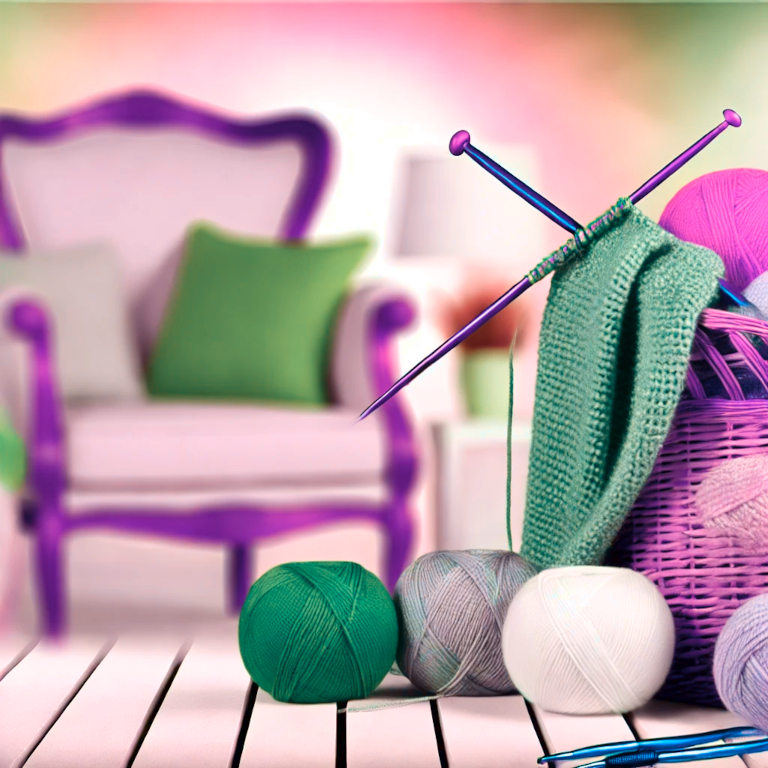Knitting and crochet are timeless crafts that offer endless possibilities for creativity and relaxation. These fiber arts not only provide a sense of accomplishment but also result in beautiful, handmade items that can be cherished for years. As an expert in DIY and Crafts, I will provide a detailed guide on knitting and crochet, exploring their benefits, essential tools, basic techniques, and project ideas. This comprehensive article aims to inspire and educate you on the joys and intricacies of these crafts.
Understanding Knitting and Crochet
Knitting and crochet are methods of creating fabric from yarn using different techniques and tools. While both crafts involve looping yarn to create stitches, knitting typically uses two needles, whereas crochet uses a single hook.
Knitting: This craft involves forming loops called stitches in a line and working back and forth across rows. Knitting produces a stretchy fabric that is ideal for garments like sweaters and socks.
Crochet: Crochet uses a hook to pull yarn through loops, creating a more structured and durable fabric. It is often used for making accessories, home decor, and intricate lace patterns.
Benefits of Knitting and Crochet
1. Stress Relief: Engaging in repetitive, rhythmic motions of knitting and crochet can be meditative and reduce stress levels. These activities promote relaxation and mindfulness.
2. Cognitive Benefits: Learning and practicing knitting and crochet improve hand-eye coordination, concentration, and problem-solving skills. They also enhance memory and fine motor skills.
3. Creative Expression: Both crafts offer vast opportunities for creativity. You can experiment with different yarns, colors, patterns, and designs to create unique, personalized items.
4. Social Connection: Knitting and crochet communities, both online and offline, provide a platform to share projects, seek advice, and connect with like-minded individuals. Participating in these communities can foster a sense of belonging and camaraderie.
5. Sustainable Fashion: Creating your own clothing and accessories reduces reliance on mass-produced items and promotes sustainable fashion practices. Handmade items are often higher quality and can be customized to fit perfectly.
Essential Tools and Materials
1. Yarn: Yarn comes in various fibers, weights, and textures. Choose yarn based on your project requirements and personal preference. Common fibers include wool, cotton, acrylic, and blends.
2. Needles and Hooks:
- Knitting Needles: Available in different materials (metal, bamboo, plastic) and types (straight, circular, double-pointed). Needle size affects stitch size and fabric texture.
- Crochet Hooks: Also available in various materials and sizes. The hook size determines the tightness of the stitches.
3. Notions:
- Scissors: Small, sharp scissors for cutting yarn.
- Stitch Markers: Used to mark specific points in your work, such as the beginning of a round or pattern repeats.
- Tapestry Needle: A blunt needle used for weaving in yarn ends and sewing pieces together.
- Measuring Tape: Essential for ensuring correct dimensions and gauge.
Basic Techniques
1. Knitting Techniques:
- Casting On: The method of creating the initial stitches on the needle. Common methods include the long-tail cast-on and the knit cast-on.
- Knit Stitch: The most basic stitch in knitting, creating a V-shaped pattern.
- Purl Stitch: Creates a bumpier texture and is often used in combination with the knit stitch to form various patterns.
- Binding Off: The technique used to finish your knitting and secure the stitches.
2. Crochet Techniques:
- Slip Knot: The starting point for most crochet projects.
- Chain Stitch (ch): The foundation of many crochet patterns, creating a base row of stitches.
- Single Crochet (sc): A basic stitch that forms a dense and sturdy fabric.
- Double Crochet (dc): Taller than the single crochet, creating a looser and more open fabric.
- Slip Stitch (sl st): Used to join stitches or move the yarn without adding height.
Project Ideas
1. Knitting Projects:
- Scarves and Cowls: Ideal for beginners, these projects allow you to practice basic stitches and patterns.
- Hats and Beanies: Small projects that introduce shaping techniques like decreases.
- Sweaters and Cardigans: More advanced projects that involve shaping, seaming, and various stitch patterns.
2. Crochet Projects:
- Granny Squares: Versatile building blocks that can be joined to make blankets, bags, and more.
- Amigurumi: The Japanese art of crocheting small, stuffed toys and figures, perfect for practicing shaping and working in the round.
- Blankets and Afghans: Larger projects that allow for creative patterns and color combinations.
Tips for Success
1. Practice Regularly: Consistency is key to mastering knitting and crochet. Set aside time each day or week to practice and work on your projects.
2. Learn from Others: Join knitting and crochet groups, attend workshops, and watch online tutorials to learn new techniques and gain inspiration.
3. Start Simple: Begin with simple projects and gradually progress to more complex patterns as your skills improve.
4. Experiment: Don’t be afraid to try new stitches, patterns, and yarns. Experimenting helps you discover your preferences and expand your skills.
5. Be Patient: Both knitting and crochet require practice and patience. Don’t get discouraged by mistakes; they are part of the learning process.
Summary
Knitting and crochet are rewarding crafts that offer numerous benefits, from stress relief to creative expression. By understanding the essential tools, techniques, and project ideas, you can embark on your journey to mastering these timeless arts. Embrace the joy of creating handmade items and explore the endless possibilities that knitting and crochet provide.






